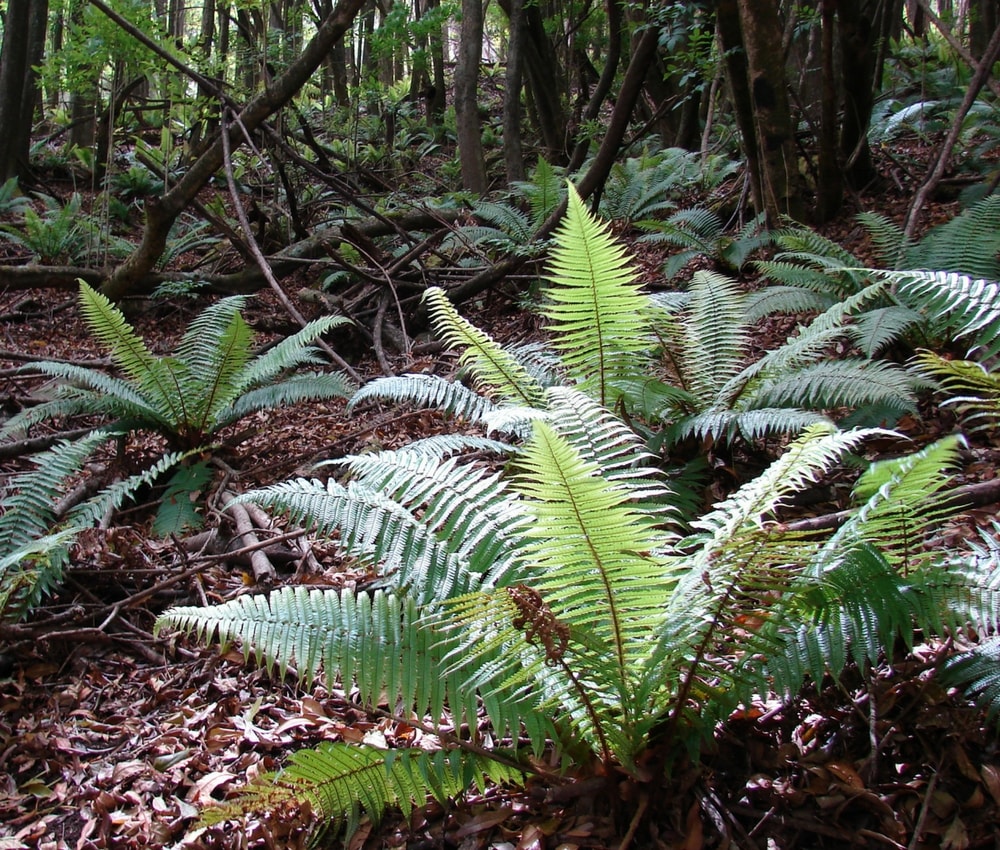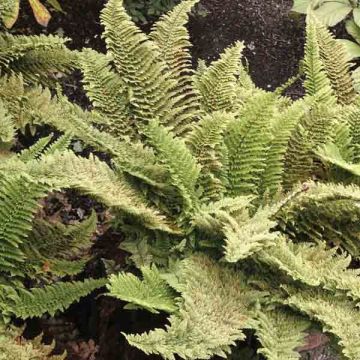
Planting ferns
How to plant them in the ground or in pots?
Contents
Ferns are woodland plants that thrive in shady and cool locations. Their decorative foliage, whether deciduous or evergreen, adds a highly graphic and wild touch to the garden. Planted beneath trees, they evoke memories of forest walks. They require little maintenance and offer an excellent solution for shaded or challenging areas to landscape. They are ideal companions for other woodland plants such as hostas or tricyrtis. Discover all our tips for successfully planting ferns, whether in the ground or in pots!
When to plant ferns?
To give your ferns the best chance of thriving, plant them preferably in early spring or autumn, when temperatures are mild. These seasons provide ideal conditions for rooting, as the soil remains sufficiently moist and temperatures are moderate. Avoid planting your ferns during frost periods or extreme heat, which could hinder their establishment.
Read also
Planting Tree FernsWhere to plant ferns?
Naturally growing in woodland undergrowth, ferns primarily need coolness and shade! You can, for example, plant them at the foot of trees or in the shade of a hedge.
Ferns thrive in cool, even moist soil, ideally in rich woodland humus. Osmundas, Matteuccia or Athyrium will flourish near pond edges, while the Male Fern (Dryopteris filix-mas) tolerates drier conditions. Most ferns prefer slightly acidic soils and may struggle in alkaline ground. However, Dryopteris affinis, hart’s-tongue ferns and aspleniums favour chalky soils.
Ferns love rich, humus-rich soils. If your soil is poor, we recommend adding leaf mould when planting. Incorporating organic matter will make it richer, lighter and less dry! You can also add peat to improve water retention or ericaceous compost if your soil is chalky.
Some ferns grow well in rockeries or on walls (such as Hart’s-tongue Ferns, Asplenium trichomanes or Polypodies)… or even on dead tree stumps! In the wild, Polypodium vulgare is sometimes epiphytic, growing directly on tree trunks. You can also create an original display by planting ferns on a living wall!

Ferns thrive in woodland. Here, Dryopteris wallichiana (photo Forest and Kim Starr).
Discover other Ferns
View all →Available in 2 sizes
Available in 1 sizes
Available in 2 sizes
Available in 1 sizes
Available in 1 sizes
Available in 2 sizes
Available in 2 sizes
Available in 2 sizes
Available in 2 sizes
Available in 2 sizes
How to plant ferns?
In the ground, in the garden:
- Before planting, thoroughly soak the root ball of your fern by immersing it in a basin of water for about fifteen minutes. This will allow the roots to absorb the water they need to establish themselves well.
- Dig a hole twice as wide as the root ball to give the roots enough space. The depth should be equal to the height of the root ball.
- Place a bit of soil mixed with leaf compost at the bottom of the hole. You can also add some ericaceous compost to slightly acidify the mix, as ferns appreciate humus-rich, slightly acidic soil.
- Position the root ball in the centre of the hole, ensuring the top of the root ball is level with the ground, neither too deep nor too shallow.
- Backfill the soil around the fern, filling in the sides well. Lightly firm the soil to avoid air pockets that could dry out the roots.
- Once the fern is planted, water generously to thoroughly moisten the surrounding soil.
- We recommend mulching around the base of the fern with pine bark, wood chips (BRF), or even dried fern fronds. This will help retain moisture and limit weed growth.
In pots:
- Mix universal compost with ericaceous compost to create a light, well-draining, and slightly acidic substrate. This mix will allow the fern to thrive in a pot.
- Choose a suitable pot, wide and deep enough to accommodate root growth. Ensure it has drainage holes to prevent waterlogging.
- Add a layer of gravel, clay pebbles, or broken pottery shards at the bottom of the pot to improve drainage. This will prevent the roots from sitting in water, which can cause rot.
- Pour some substrate into the bottom of the pot, then position the root ball in the centre, keeping the top of the root ball level with the rim of the pot.
- Fill in with the remaining substrate around the root ball and gently firm to stabilise the plant.
- After planting, water generously to moisten the substrate.
For optimal care, keep the substrate moist but not waterlogged. Place your pot in a shaded or partially shaded spot, as ferns prefer areas with little direct sunlight.
Read also
Mulching: Why? How?How to care for them?
After planting, water your fern regularly to keep the soil moist, especially during the first two years, and particularly during dry spells. Consistent moisture is essential for proper root development.
Over time, your fern will become more self-sufficient and better tolerate dry periods. During intense drought, it’s normal for the foliage to wilt or disappear; it will naturally recover once moisture returns.
As autumn approaches, gradually reduce watering, as the fern enters dormancy. During this period, overly wet soil can weaken its roots.
In summer, mulch around the base of the fern to keep the soil cool and reduce water evaporation. You can use pine bark, dried fern fronds, or fallen leaves. You may also apply a layer of mulch to protect the crown in winter during severe cold.
Ferns aren’t heavy feeders, but they thrive in humus-rich soil enriched with organic matter. If your soil is poor, add a light layer of compost or leaf mould in spring. One annual application is enough to encourage healthy growth.
Ferns are sensitive to disturbance; they dislike being moved once well-established. Avoid transplanting them, as this may disrupt their growth and adaptation to their environment.
- Subscribe!
- Contents











































